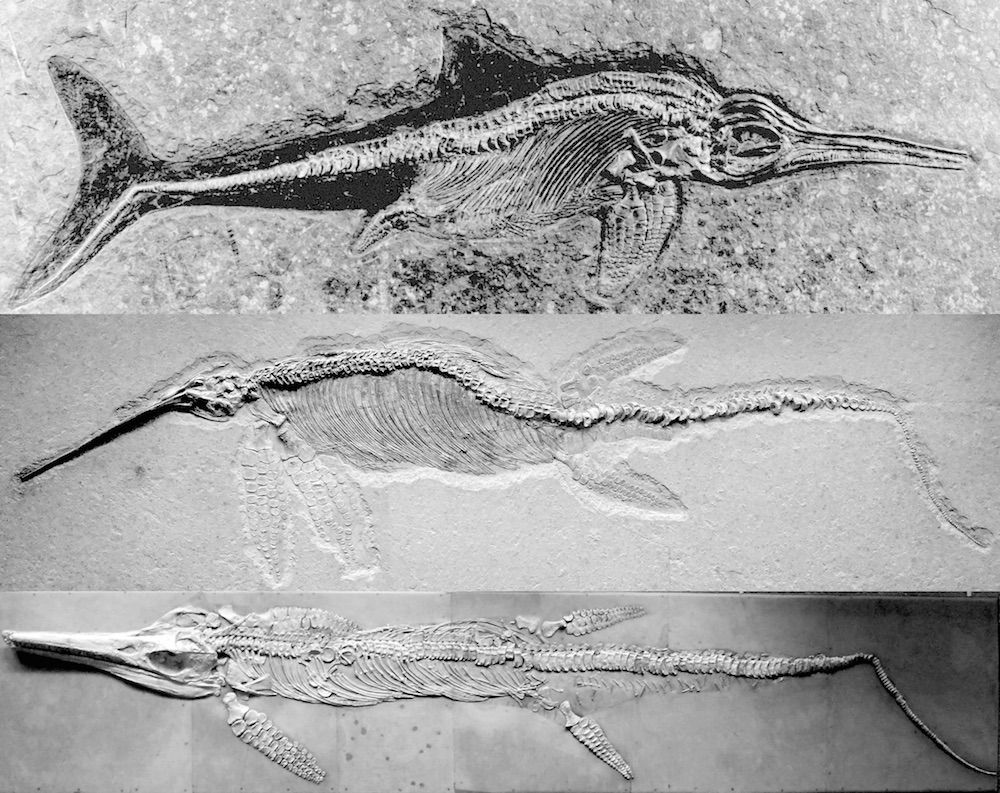Paleontologists led by Prof Ryosuke Motani of the University of California, Davis, have discovered an amphibious ichthyosaur that lived in the seas of what is now China during the upper Lower Triassic, about 248 million years ago. The discovery is the first to link the dolphin-like ichthyosaur to its terrestrial ancestors, filling a gap in the fossil record.

Cartorhynchus lenticarpus. Image credit: Ryosuke Motani / University of California, Davis.
The fossil, named Cartorhynchus lenticarpus, represents a missing stage in the evolution of ichthyosaurs. Until now, there were no fossils marking their transition from land to sea.
“But now we have this fossil showing the transition. There’s nothing that prevents it from coming onto land,” said Prof Motani, who is the first author of a paper published in the journal Nature.

Prof Motani and his colleagues from the United States, China and Italy, discovered the fossil in the Majiashan Quarry near Hefei City, Anhui Province.
Cartorhynchus lenticarpus is the smallest ichthyosaur to date. The preserved length of the specimen is 21.4 cm; total body length is estimated to be only 40 cm.
Its amphibious characteristics include large flippers and flexible wrists, essential for crawling on the ground.

Most ichthyosaurs had long, beak-like snouts, but Cartorhynchus lenticarpus shows a nose as short as that of land reptiles. Its body also contains thicker bones than previously-described ichthyosaurs.
This is in keeping with the idea that most marine reptiles who transitioned from land first became heavier, for example with thicker bones, in order to swim through rough coastal waves before entering the deep sea.

This illustration shows what a newly discovered amphibious ichthyosaur may have looked like when it was alive some 248 million years ago. Image credit: Stefano Broccoli / University of Milan.
Unlike more-derived ichthyosaurs, Cartorhynchus lenticarpus was probably a suction feeder.
It lived about 4 million years after the Permian–Triassic extinction event that occurred 252 million years ago.

Scientists have wondered how long it took for animals and plants to recover after such destruction, particularly since the extinction was associated with global warming.
“This was analogous to what might happen if the world gets warmer and warmer. How long did it take before the globe was good enough for predators like this to reappear? In that world, many things became extinct, but it started something new,” Prof Motani said.
Source: sci.news








